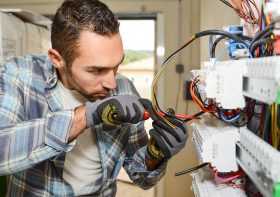The anniversary of Konrad Reuland’s tragedy reminds us of the toll of brain aneurysms

It was believed by medical experts and sports historians to be the world’s first heart transplant between two major league athletes. The story of Reuland’s gift and Carew’s recovery touched fans all over the country.
Reuland, a young man in his 20s who looked like he was in perfect health, had decided to check the box for organ donors when filling out a driver’s license form. This decision changed the lives of Carew and two others who received Reuland’s kidney and liver. Carew played for the Minnesota Twins and California Angels and finished his career with 3,053 hits. He received the other kidney. Carew suffered a heart attack in 2015. He was placed on the waiting list for heart transplants.
Carew’s jersey number is 29, and Reuland was 29 years old when he died. Reuland was not aware of who would receive his organs until after the surgery. Reuland died Dec. 12, 2016.
Mary Reuland – Konrad’s mom – figured out Carew’s connection to her son just a few days later. She read about Carew’s life-saving heart transplant four days after Konrad died, and many people asked her if Carew was the recipient. Mary Reuland was curious and called the Organ Donation Network, which matched Konrad’s heart with Carew. She was shocked to learn that Carew had been saved by her son’s heart. Less than three months after the families met, Mary Reuland used a stethoscope and listened to her son’s heart beating inside Carew’s chest.
Rod Carew, Mary Reuland, and Konrad’s mom, Mary Reuland, at a press conference in Anaheim in April 2017. Photo by Chris Carlson/AP
These events deeply affected me as a medical professional and also as a sports fan. As a neurosurgeon specializing in brain aneurysms, I was deeply moved by the news that Reuland had lost his life. Reuland sustained a ruptured aneurysm while lifting weights. He was with his family on Thanksgiving, and they were decorating the house for Christmas. Reuland did not live to celebrate the holiday. He underwent brain surgery late in November to repair the ruptured aneurysm. Two weeks later, his death was a familiar one to me.
No evidence exists that brain aneurysms are related to traumatic head injury. Many may wonder how a young athlete who is in incredible shape can suddenly develop a fatal condition.
The bluest of all the skies
An aneurysm occurs when there is a weakness in the artery wall.
An aneurysm can occur in a weak area of the artery wall. This weak spot can expand like a balloon. Designua/Shutterstock.com
According to the Brain Aneurysm Foundation, six million people, or one in fifty, have a brain aneurysm that has not ruptured. Imaging can detect aneurysms, but it is not recommended to screen for them unless symptoms are present or if there is a family history of aneurysms. The weak spot grows over time, almost like a balloon. It will eventually break if it continues to grow. The causes are largely unknown. Some are hereditary.
Aneurysms may occur anywhere in the human body. However, brain aneurysms usually form in the vessels of the head at the base. Aneurysms are most commonly found at the points where blood vessels branch off.
Aneurysms in the brain can affect anyone, young or old, rich or poor, with a history of aneurysms and without.
Most often, they strike without warning, and 50% of the time, they are fatal. This leaves families in shock and grief. Four out of five brain aneurysm victims have no history of the condition. The research indicates that tobacco use increases your risk, and aneurysms are disproportionately affecting women.
No one is sure of the cause of brain aneurysms. They affect as many as 5 percent of Americans, and 30,000 ruptured aneurysms occur each year.
Headaches, double vision, changes in vision, seizures, or other neurological symptoms are all signs of a brain bleed.
When the aneurysm ruptures, that’s when you have a real problem.
A ruptured aneurism can cause bleeding in the brain, called a subarachnoid hemorrhage. This is a form of stroke. These patients can experience a “thunderclap headache.” The patient may be found in an unconscious state or die suddenly. We treat aneurysms that have ruptured to prevent them from rupturing again. It is 80 percent likely that it will rupture again if it ruptures the second time.
A devastating disorder
Grim statistics plague this devastating disorder: If a brain aneurysm ruptures, there’s a 15% chance of dying even before you reach a hospital. The cases of permanent disability for those who survive range from severe brain damage to mild cognitive problems. Many people are unable to return to work.
Recent research on cerebral aneurysms suggests that inflammation may be a cause of aneurysms. My laboratory at the University of Florida is researching the role inflammation could play in aneurysm development.
My lab is investigating how blood hitting the branching points of the blood vessels at the base of the brain can cause inflammation. We are looking at how inflammation can cause a weakening of blood vessels, which is the reason for aneurysm development.
We also study different types of inflammation cells that can cause aneurysms to rupture in order to develop a drug to combat these inflammatory cell types. We study cytokines or molecules that control cell activity, send signals, and recruit inflammatory cells toward the weaker part of the vessel. We are looking at ways to treat aneurysms by turning on or off inflammation.
My team is working hard in the laboratory, but I am seeing patients at the hospital who have “the worst headaches of their lives” and had no warning of what would come. The aneurysm in those cases may have ruptured.
Often, patients who are diagnosed with an aneurysm that has not ruptured learn about it by accident. They may have been referred for headaches or double vision. It could have been cranial palsy or, in rarer cases, an epileptic seizure.
Aneurysms can be treated surgically. The aneurysm is clipped off with a metal clip after opening the skull. They may also receive an endovascular procedure, where I pass a small tube up an artery on the leg to the brain and fill it with coils or a metal mesh tube.




Leave a Reply